Radioluminescent Personnel Markers (1950s)
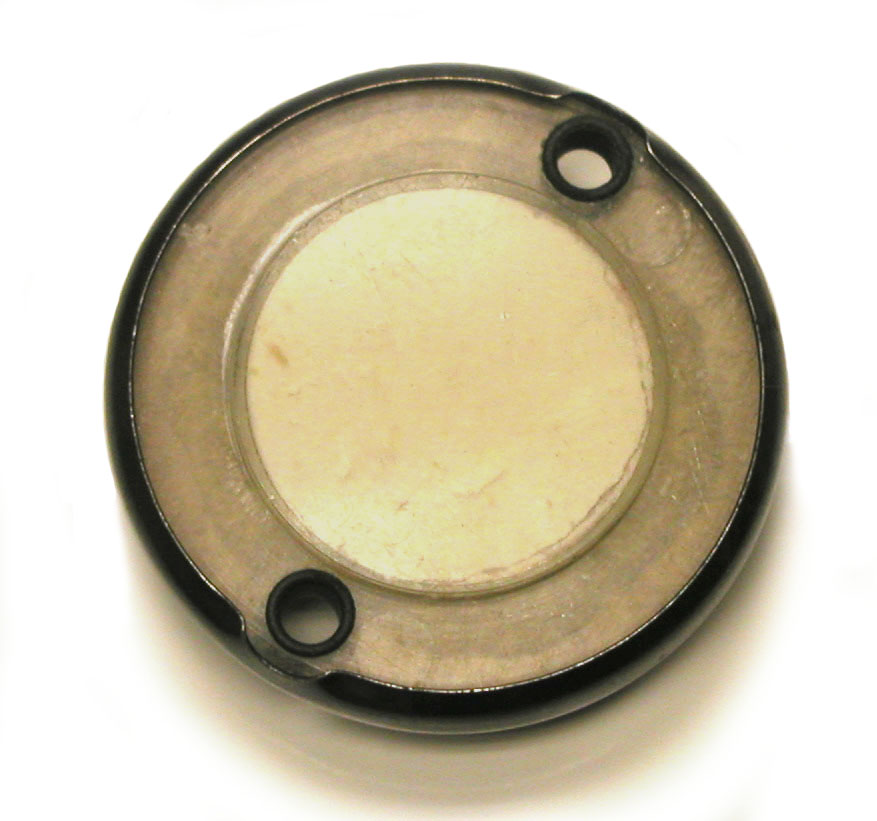

Various types of radioluminescent disks have been used by the armed forces to provide low level light sources for use at night. The type shown above, known as a personnel marker, could be clipped to a belt or helmet so as to enable sailors (or soldiers) operating under darkened conditions to identify each other's positions. This example contains approximately 7 uCi of Ra-226 and has a 1.5 inch outer diameter. It probably dates from the 1950s. There is no indication that it contains radioactive material, only that there is "Poison Inside" (radioactive material was classified during the 1940s as a poison for the purpose of transportation, see Transportation Labels). As best as I can determine, the military has been using such radioluminescent markers since the 1930s.
The three major categories of military markers:
- Personnel markers
Primarily employed by the Navy. Used to identify the positions of personnel. Each marker had a clip on the back. The luminous area was usually one inch in diameter. - Deck markers
Primarily employed by the Navy. These did not have a clip. They were usually attached to the deck of a ship via two screws. The luminous area was typically one inch in diameter. The protective plastic cover was thicker than that of the personnel markers. The amount of Ra-226 in the personnel and deck markers ranged from 5 to 15 microcuries (uCi). Three brightness designations were employed: 15 M, 25 M and 30 M. Increasing the Ra-226 activity, increased the light output. - Bridge markers
Primarily used by the Army to mark the position of bridge entrances and vehicles. The luminous area was usually one and three quarter inches in diameter. They were attached via a threaded bolt projecting from the back of the marker. Ra-226 activities were on the order of 20 uCi. A larger size and higher activity was needed because the Army needed their markers to be visible at greater distances than those required by the Navy. An authoritative source has told me that one marker would often be clipped on each side of the entrance to a bridge so that drivers operating at night without lights would not miss the bridge and drive into the water, ditch or whatever. During the Korean War, the North Koreans sometimes moved one of the markers so that the allied vehicles would miss the bridges and crash.
Other radioluminescent marking devices have been employed by the military, e.g., the plastic "ropes" with a clip on each used by the Navy.
Until 1950 or so, the only radioactive material used in these markers was Ra-226. During the early 1950s, markers began to be produced using Sr-90 instead of Ra-226. By the late 1960s, manufacturers had stopped employing radium. Strontium had three major advantages over radium: a greater variety of luminescent colors were possible with strontium than radium, the gradual decrease in luminous intensity was minimal because strontium's beta particles did less damage to the zinc sulfide crystals that radium's alpha particles, and the photon (bremsstrahlung) emissions from strontium were less of a safety concern than the gamma rays from radium.
Because a beta particle will not produce as much light as an alpha particle, Sr-90 activities were substantially higher than the activities in radium containing markers: 0.2 to 1 mCi per marker!
The photos below show the front and back of a Sr-90 containing deck marker produced in 1956 by U.S. Radium Corporation (ca. 1.75" outer diameter).

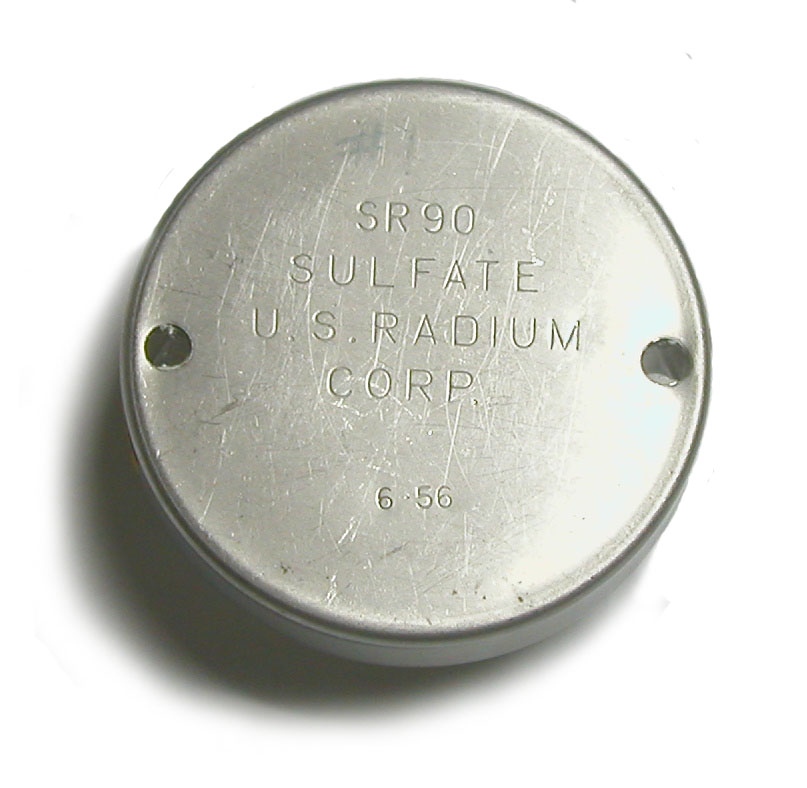
The markers were stored in the type of container shown in the following photographs. This lead-lined box (ca. 7.5" x 4" x 1.5") was made by the U.S. Radium Corporation. The text on the lid indicates that it was used by the Army Corps of Engineers to contain "Luminous Markers, Radioactive, Type III." The container's interior is divided into four compartments, each of which could be used to hold up to two markers.
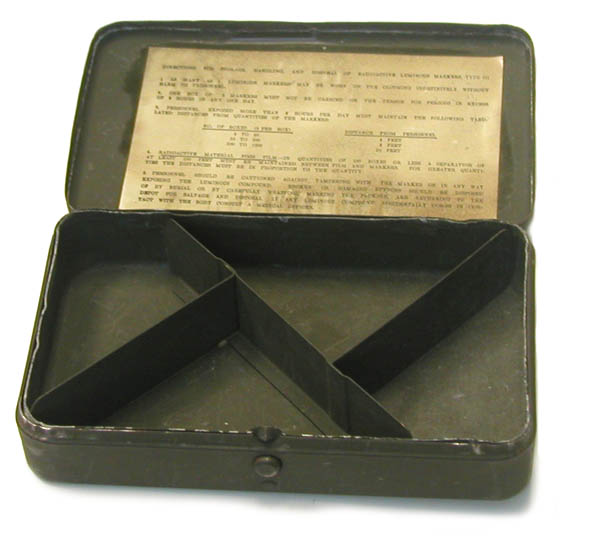
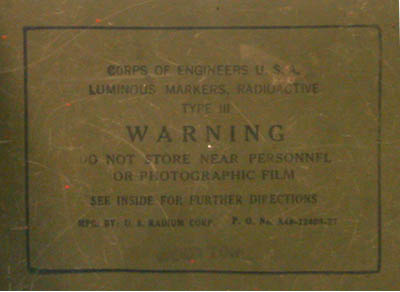
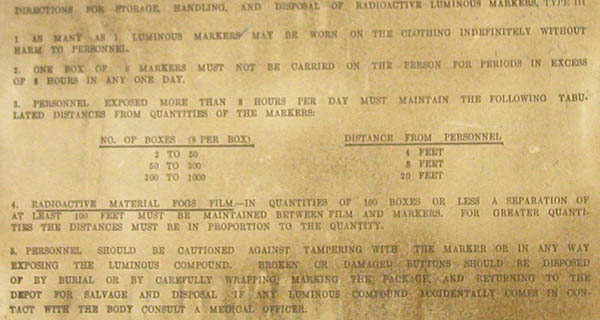
The following diagram shows the construction of a strontium-containing deck marker and personnel marker (ca. 1955).

